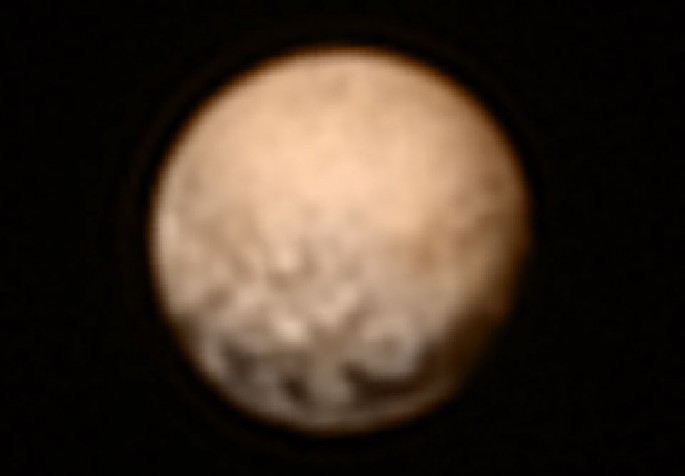NASA's New Horizon probe has sent back another set of images of Pluto which look a tad better than the previous lot but are still too fuzzy to be used to decipher anything meaningful. That is set to change soon though, with the space probe set to be just about 7,800 miles above the surface of Pluto on June 14, at about 7.50 AM EST.
New Horizons will not start sending back images immediately though as there are a host of other tasks that will keep the space probe busy. The spacecraft has seven instruments on board each tasked with specific jobs. These include compiling detailed measurements of Pluto and its moons, photographing a single point from different points to create topographical map and so on.
The timing of the New Horizons' flyby over Pluto is so programmed to capture images of the planet's surface both during sunlit and dark conditions so as to allow scientists to compare both. This will also allow the scientists to study the haze or clouds, NDTV reported.
Similarly, the on-board spectrometer will try to determine what material the surface of Pluto is made of. This assumes significance considering the known heavenly objects beyond Mars such as Jupiter and Saturn are giant balls of gases like hydrogen and methane. It is only the four inner planets - Mercury, Venus, Earth and Mars - that are known to have rocky surfaces. Pluto is composed of two-third rock and the rest ice.
New Horizons space probe will also be used to study the reflectivity of radar signals off Pluto's surface. For this, the 70 meter radio dish at the NASA Goldstone Deep Space Communications Complex in California will be sending radio signals to Pluto, the reflections of which are to be picked up by New Horizons spacecraft.
Scientists are also looking for an explanation of the strange dark spots that were previously seen lined along Pluto's equator, though there seems a continuous swathe of dark spot along the equator, Engadget reported. Another thing that is baffling scientists is the presence of a dark region in the polar region of Pluto's largest moon Charon. Polar Regions are usually ice capped and appear bright.



























